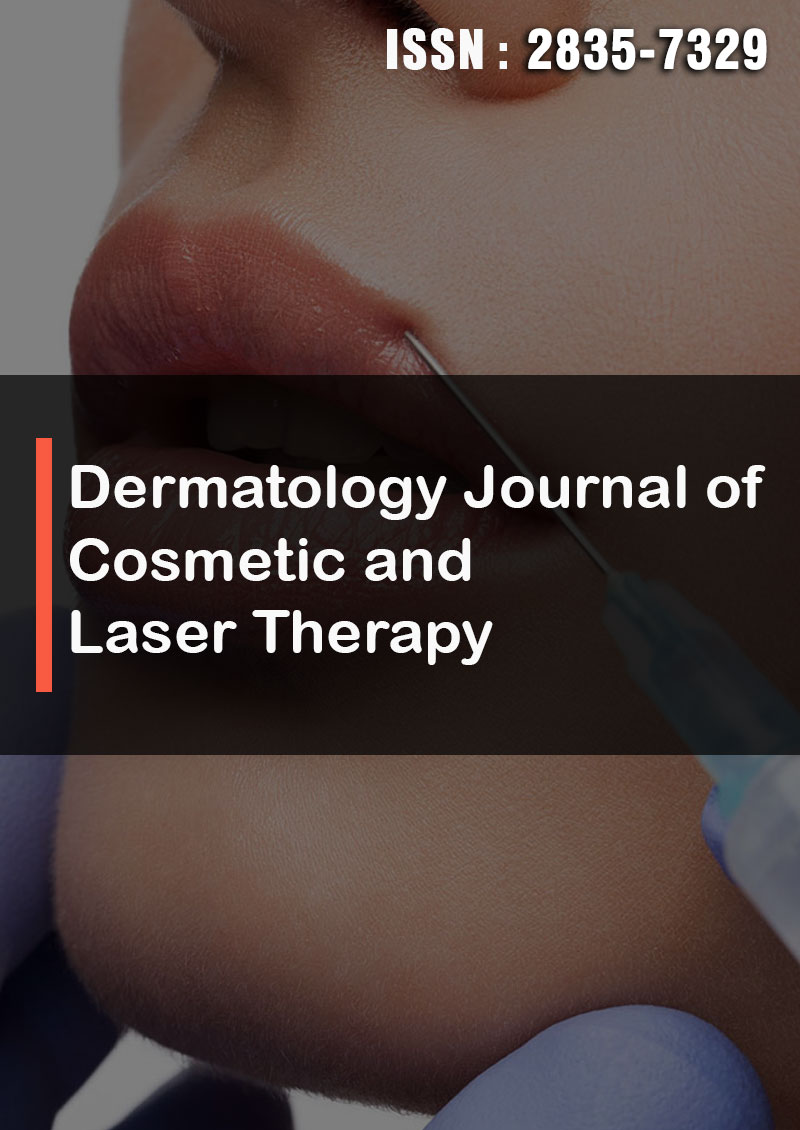Auto-Occlusive Lidocaine 7% and Tetracaine 7% Cream has Greater Pain Reduction Effects in Comparison with Lidocaine 4% Cream during Laser CO2 Dermabrasion Procedure in Preparation of Non-Cultured Autologous Epidermal Cell Grafting for Repigmentation in Vitiligo Subjects. An Intrasubject Pilot Evaluation Study
Abstract
Giovanni Leone, Andrea Paro Vidolin, Francesca Colombo and Massimo Milani
Introduction: Autologous non-cultured epidermal cell graft is a complex but promising technique in the treatment of vitiligo. Affected vitiligo areas should be de-epithelialized using an ablative Laser CO2 prior healthy epidermal cell inoculation. The dermabrasion (DA) procedure could be painful for the patient. To reduce the discomfort of this step topical anaesthesia is very often required. Topical anaesthetics available differ for composition, concentration of active anaesthetic molecules and methods of application (occlusion or not). An auto occlusive film-forming cream containing Lidocaine 7% and Tetracaine 7% (Pl-C) has shown in previous trials to be very effective in reducing discomfort during dermatological painful procedures like phototherapy, laser-conducted tattoo removal and laser resurfacing for skin ageing.
Study Aim: To compare the clinical efficacy of Pl-C with Lidocaine 4% cream (As-C) in reducing the pain during Laser DA procedures in vitiligo subjects in preparation of autologous non-cultured epidermal transplantation.
Subjects and Methods: We performed a prospective intra-subject randomized cases series in 7 subjects (4 men and 3 women) with segmental vitiligo with symmetrical lesions suitable for autologous non-cultured epidermal transplantation. Before the DA procedures the Pl-C or As-C were applied in a randomized fashion over the vitiligo areas to be treated. Pl-C was applied for 20 min without occlusion. The product was removed before the Laser procedure. As-C cream was applied for 30 min with occlusive band and then removed before the procedure. The treated skin regions had a mean area of 72±50 cm2; (range: 10 to 150 cm2). The primary outcome was the 100-mm Visual Analogue Scale (VAS) for patient-assessed pain evaluation with 0 mm value means no pain at all and 100 mm representing the worst possible pain.
Results: Just after the Laser CO2 DA procedure the VAS score in PL-C area was 32±7 mm and 58±8 mm in As-C treated areas. This difference (-25±4 mm; 95% CI: from -16 to -35 mm) was highly statistically significant (p=0.0001) and clinically relevant (higher than the minimum clinically significant difference).
Conclusion: The Lidocaine 7% and Tetracaine 7% auto occlusive cream is more effective than lidocaine 4% cream in reducing the pain associated with Laser CO2 DA procedures in preparation of skin autologous transplantation in vitiligo subjects.




